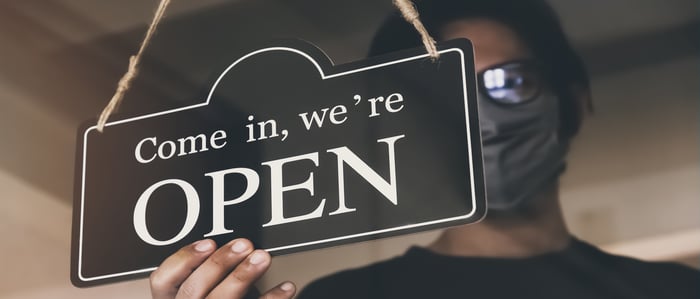
As Covid-19 quarantine measures ease up, companies and retailers are strategizing how to get back on track and adapt to the new consumer buying behaviors.
The past few months have been a trying time of change and sacrifice for everyone, but it has also been a chance for learning and growth within our communities and industries alike. As a result of the unprecedented COVID-19 pandemic, companies have been forced to handle this crisis in a variety of ways based on their function and reach. Some operations are being put on hold, others are making fundamental changes to the way they conduct business, and the lucky ones have even seen an increase in sales. Additionally, consumer behavior has also undergone massive changes due to quarantine measures, stay-at-home-orders, and supply chain disruptions. But now, as the spike of new COVID-19 cases starts to decline and the government rolls out their “phased-in” approach to reopening the country, businesses must strategize how to not only resume regular sales operations but to also how to embrace the new opportunities this pandemic has presented. Consider the following strategies to adapt to new customer behavior post quarantine lockdown and get your organization back on track.
1. Strengthen Your Brand and Relationships
Throughout this time of self-isolation and uncertainty, one central theme has remained at the forefront: we’re all in this together. This mantra has built a sense of community, allowing everyone to feel connected to a greater purpose. As we transition back to life as we knew it, this newfound mentality is here to stay. Communities are expected to emerge more connected than ever before, emphasizing the importance of relationships and, ultimately, the customer experience. Retailers should focus their messaging and tactics on providing comfort and reassurance in their consumer interactions. Develop and focus on products that provide real value to their customers, offering security and fostering long-term relationships.
Additionally, many retailers have cultivated brand loyalty and success by giving their employees and customers a voice. Listening to how they’ve been affected allows a retailer to truly understanding their needs and a consumer to feel heard, building a lasting relationship.
2. Cater to Evolving Ecommerce Trends
In 2020, almost any item, essential or non-essential, is available for online purchase. However, customers still enjoyed the physical shopping experience and would often choose a store visit over the ease of online. Throughout the pandemic, consumers have heavily resorted to online shopping from the safety and comfort of their homes. As a result, there's been a 129% year-over-year growth in North American e-commerce orders and 146% growth in all online retail orders as of mid-April.
Consumers have developed new online buying habits, and many cautious ones will continue to prefer this method for months ahead even after business and in-store operations resume. As a result, retailers should utilize this opportunity to develop and expand their e-commerce efforts, as well as test and launch experience-driven technology across their platforms, to suit their consumers’ preferences.
Aside from making their products available online, a strategic move would also be to remove any barriers or friction from consumer experiences. Individualized online account control and security can provide simplified accessibility and transform an occasional online buyer into a loyal online buyer.
3. Offer Delivery When Applicable
There has been a growing appreciation for the convenience of delivery services throughout the pandemic. This opportunity has allowed customers to obtain desired goods while remaining in the safety and comfort of their homes. As the U.S. slowly begins reopening businesses, consumers are anticipated to continue utilizing delivery services now more than ever. Shopping online for essentials products like groceries, cleaning supplies, and other household products as a result of COVID-19 was a first-time experience for many, and consumers are anticipated to continue taking advantage of this convenient service even after regular retail-accessibility resumes.
Disruptive market companies like Carvana have developed their business models off of an entirely online experience, from flexible financing to end delivery at a consumer’s door. As a result, they were equipped to continue their operations without interruption and flourished in this changing landscape. It’s no secret that traditional dealerships have historically had more success with in-person visits, but the pandemic has even influenced their automakers to experiment with other avenues such as shop-from-home programs.
Protecting Your Customers During a Transitional Time
As companies are advised to follow their governors’ orders and slowly phase back to their operations according to state regulations, they should continue to keep these growth opportunities in mind as they start to uncover what this new retail landscape will entail. As consumer habits evolve and new methods of conducting business combat their needs, one thing is for certain: consumers need protection.
Throughout these unpredictable and unprecedented times, Fortegra has remained resilient, staying flexible and determined to help our clients and customers alike when they need us most. Contact us today to learn more about Fortegra and how our products and services can help you and your business plan(s) evolve as you transition in this changing environment.
Fortegra® is the marketing name for the service contract and insurance operations of the subsidiaries of Fortegra Financial Corporation.



